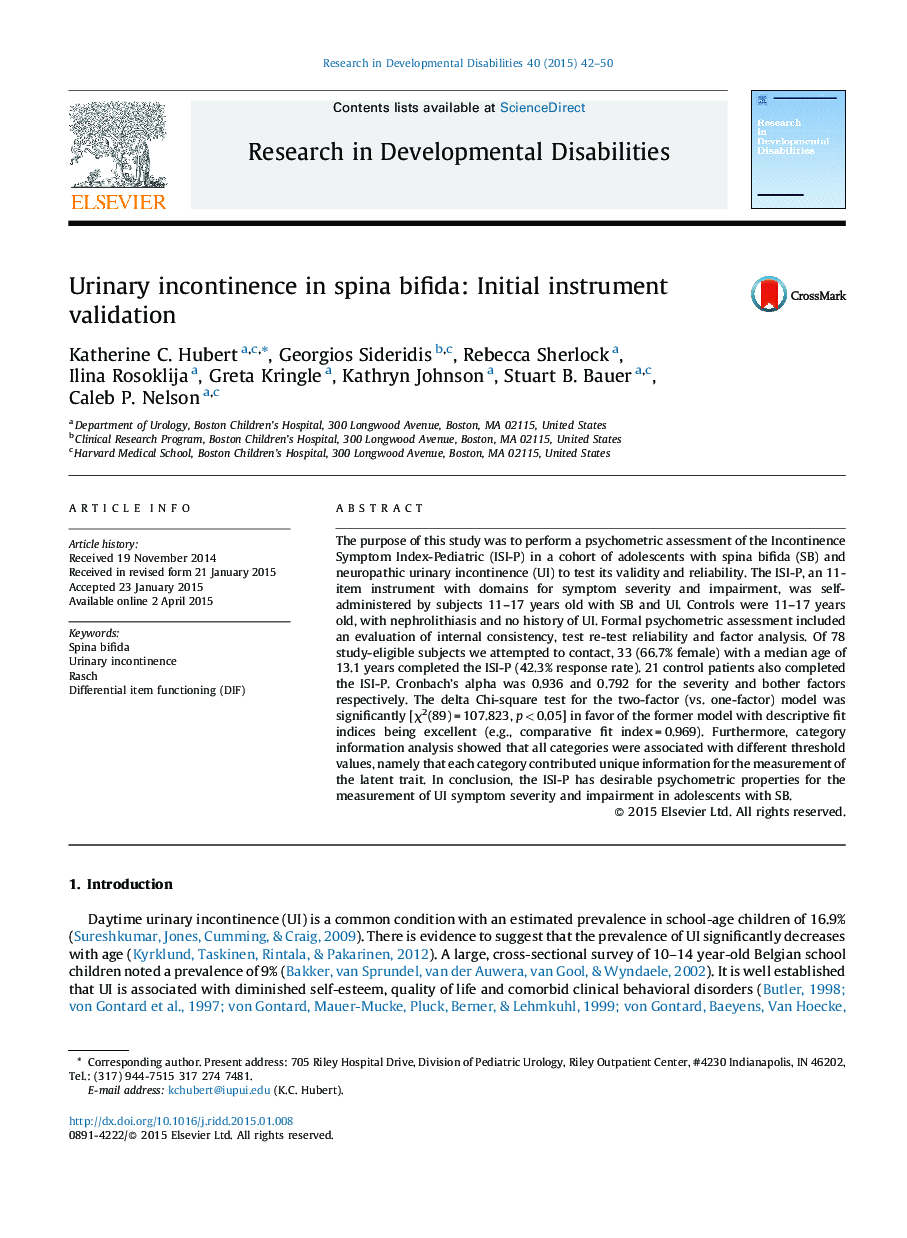| Article ID | Journal | Published Year | Pages | File Type |
|---|---|---|---|---|
| 371199 | Research in Developmental Disabilities | 2015 | 9 Pages |
•We validate a urinary incontinence instrument for spina bifida adolescents.•A two-factor model measuring severity and bother from incontinence is the best fit.•A five-point Likert scale is adequate for assessment of survey responses.•The instrument is brief, focused and clinically relevant for spina bifida providers.
The purpose of this study was to perform a psychometric assessment of the Incontinence Symptom Index-Pediatric (ISI-P) in a cohort of adolescents with spina bifida (SB) and neuropathic urinary incontinence (UI) to test its validity and reliability. The ISI-P, an 11-item instrument with domains for symptom severity and impairment, was self-administered by subjects 11–17 years old with SB and UI. Controls were 11–17 years old, with nephrolithiasis and no history of UI. Formal psychometric assessment included an evaluation of internal consistency, test re-test reliability and factor analysis. Of 78 study-eligible subjects we attempted to contact, 33 (66.7% female) with a median age of 13.1 years completed the ISI-P (42.3% response rate). 21 control patients also completed the ISI-P. Cronbach's alpha was 0.936 and 0.792 for the severity and bother factors respectively. The delta Chi-square test for the two-factor (vs. one-factor) model was significantly [χ2(89) = 107.823, p < 0.05] in favor of the former model with descriptive fit indices being excellent (e.g., comparative fit index = 0.969). Furthermore, category information analysis showed that all categories were associated with different threshold values, namely that each category contributed unique information for the measurement of the latent trait. In conclusion, the ISI-P has desirable psychometric properties for the measurement of UI symptom severity and impairment in adolescents with SB.
